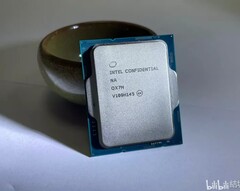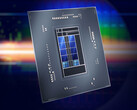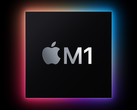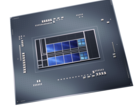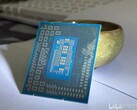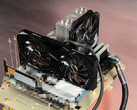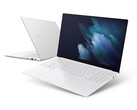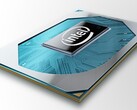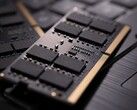A Chinese user on the BiliBili forums posted more details on Intel’s Alder Lake platform that is only a few weeks away from an official launch. The post is structured as a Q&A session and highlights some platform specific details along with performance numbers, plus availability and pricing info. Be sure to have large quantities of salt handy, as the post makes some wild claims.
First off, some interesting points regarding platform specific features and availability:
- Besides requiring new motherboards with the 600-series chipsets and the new LGA 1700 socket, Intel’s Alder Lake CPUs also need different coolers.
- Even though Intel is pushing for the adoption of the new ATX12VO power connector, 90% of the new 600-series motherboards will still feature the conventional ATX12V 24-pin connector.
- The new motherboards will only be able to work with DDR4-only or DDR5-only RAM setups, not a hybrid between the two.
- PCIe Gen 5 support is only included for the GPU slot, the M.2 slot for NVMe SSDs is still restricted to PCIe Gen 4 X4.
- Alder Lake CPUs and chipsets do not get too hot, so passive cooling on the lower-tier models is doable. Apparently, maximum operating temperature for the CPU is 108 °C and disabling the small Gracemont cores does not lower power consumption, but this might be a bug that could be corrected in the future.
- Overclocking potential is quite good with 5.2 - 5.3 GHz clocks achievable for all big cores if the small Gracemont cores are disabled.
- Availability for the i5 / i7 / i9 K/KF models along with the first Z690 motherboards is scheduled for early November, non-K models with the B660 and H610 motherboards scheduled to launch in January 2022.
- Prices may be significantly higher than current Rocket Lake models, as the Q4 supply is expected to be limited to 300,000 units (unclear if this refers to the global market or only to the Chinese market).
Interestingly, the last question refers to engineering samples and qualification samples, so we are not too sure if the poster even reviewed a final version to come with the following wild conclusions:
- Intel is reintroducing the FIVR (Fully Integrated Voltage Regulator) design for the Uncore voltages. The V-Core and the Core GT iGPU voltages do not seem to adhere to this scheme, though, while the VCCSA and the VCCIO voltages seem to be combined now. CPUs could require as much as 1.8 V to get past the POST state and FIVR immediately drops the voltage to around 1.2 V.
- Intel’s top-of-the-line i9-12900K is allegedly more than 50 fps faster than the AMD Ryzen 9 5950X in CS:GO, but in other triple A games, the difference is less noticeable.
- According to the BiliBIli poster, the best buy Alder Lake CPU award would go to the i5-12400 model, because it only features 6 big cores with no small cores, and the 4 GHz all-core max boost clock is still enough to enable huge performance gains over the i5-11400.
- The poster claims that the hybrid core architecture is not at all used on Windows 10. Alder Lake CPUs really need to run on Windows 11 to take advantage of the improved processor scheduling. Otherwise, programs and games will only use the little cores in Windows 10. Moreover, games running in Windows 11 will disable the small cores, granting exclusive L3 cache access to the big cores.
- DDR4 optimization is not really that good on the Alder Lake platform. DDR4 can run in Gear 1 at DDR4-3600 specs by default, but increasing the Uncore voltage only bumps speeds up to DDR4-3866. Intel still does not take advantage of the top B-dies for DDR4, and it feels like DDR5 usage is favored. Still the DDR5 memory controller is not really that optimized either. DDR5 RAM runs in Gear 2 by default, and the performance does not seem better compared to DDR4 unless the RAM is overclocked to DDR5-8000+ specs. There is a Gear 4 mode as well, but this is for DDR5-10000 specs and above.
- Tying with the previous point, latency on the DDR5 RAM is said to be around 40% higher even when running at the same frequency and same CL specs as a DDR4 kit. The poster seems to be suggesting that the default DDR5-4800 RAM specs are not faster than the DDR4-3600, but we know prices for the DDR5 kits are almost three times higher than the DDR4 ones, based on Newegg listings.
Source(s)
I first stepped into the wondrous IT&C world when I was around seven years old. I was instantly fascinated by computerized graphics, whether they were from games or 3D applications like 3D Max. I'm also an avid reader of science fiction, an astrophysics aficionado, and a crypto geek. I started writing PC-related articles for Softpedia and a few blogs back in 2006. I joined the Notebookcheck team in the summer of 2017 and am currently a senior tech writer mostly covering processor, GPU, and laptop news.


 Deutsch
Deutsch English
English Español
Español Français
Français Italiano
Italiano Nederlands
Nederlands Polski
Polski Português
Português Русский
Русский Türkçe
Türkçe Svenska
Svenska Chinese
Chinese Magyar
Magyar